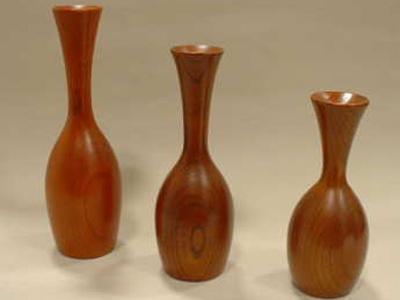|
Yuutaro Oono was born in Tokyo in 1935. He is currently the CEO of Ohno Seimitsu Kogyo Co. Ltd.
After graduating from Hokunoujima Technology High School, Mr. Oono was employed by an 8mm film company. In 1978, he started Ohno Seimitsu Kogyo Co. Ltd which specializes in making gears. He also dedicated himself to bringing back Karakuri dolls , which were popular in the Edo period, to modern times, using the advanced techniques of modern gear making.
Mr. Oono first learned about Karakuri in an engineering book and he became passionately interested in them. He had acquired a copy of “Karakuri-zui”, an illustrated compendium of mechanical devices written by Hanzou Hosokawa, a legendary karakuri artisan of the Edo period. Mr. Oono began studying the book intensely and, for the last 20 years, he has been reproducing the Karakuri dolls most loved by people in the Edo period such as “tea serving doll”, “shinan guruma” and the “Karakuri clock”.
Each doll is made using about 80 different parts, not counting its face and clothing. The dolls are created in such a way as to preserve traditional methods as much as possible. The fusion of the Edo period and modern times shows both beauty and functionality.
Mr. Oono’s next project is to bring back “Yumihari Warawa, or “ Boy Archer”, which shows a boy shooting an arrow at a target. His tremendous respect for the Karakuri artists of the Edo period motivates him to try to recreate the Karakuri Dolls most beloved in that period, so that people can remember and appreciate their heritage.
After graduating from Hokunoujima Technology High School, Mr. Oono was employed by an 8mm film company. In 1978, he started Ohno Seimitsu Kogyo Co. Ltd which specializes in making gears. He also dedicated himself to bringing back Karakuri dolls , which were popular in the Edo period, to modern times, using the advanced techniques of modern gear making.
Mr. Oono first learned about Karakuri in an engineering book and he became passionately interested in them. He had acquired a copy of “Karakuri-zui”, an illustrated compendium of mechanical devices written by Hanzou Hosokawa, a legendary karakuri artisan of the Edo period. Mr. Oono began studying the book intensely and, for the last 20 years, he has been reproducing the Karakuri dolls most loved by people in the Edo period such as “tea serving doll”, “shinan guruma” and the “Karakuri clock”.
Each doll is made using about 80 different parts, not counting its face and clothing. The dolls are created in such a way as to preserve traditional methods as much as possible. The fusion of the Edo period and modern times shows both beauty and functionality.
Mr. Oono’s next project is to bring back “Yumihari Warawa, or “ Boy Archer”, which shows a boy shooting an arrow at a target. His tremendous respect for the Karakuri artists of the Edo period motivates him to try to recreate the Karakuri Dolls most beloved in that period, so that people can remember and appreciate their heritage.
| [→より詳しい記事を見たい方はこちら] | |
| [+ADDRESS] | 
|

















